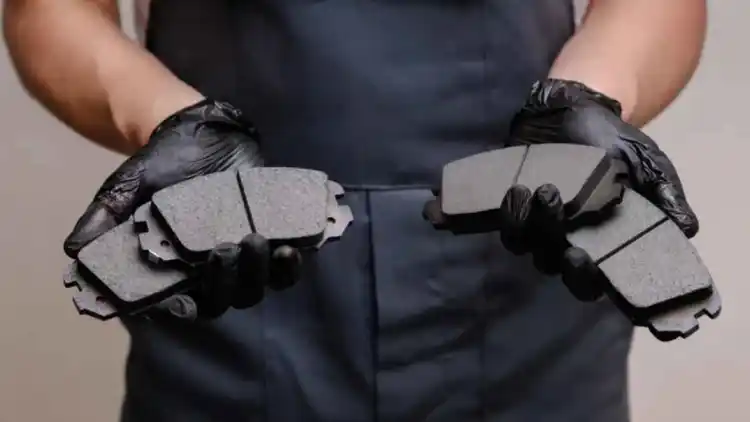- Why Choose a Used Bike?
- How to Buy a Used Bike?
- What to Look for in a Used Bike?
- Where to Buy Used Bikes?
- Is Buying a Used Bike Right for You?
- FAQ
Buying a used bike can be an exciting and smart decision, especially if you're eager to save money, find a unique model, or support eco-friendly practices. Here's a comprehensive guide covering everything you need to know before choosing your next pre-owned ride.

Why Choose a Used Bike?
Choosing a second-hand bike means tapping into a market full of potential advantages. Instead of spending a fortune, you could find a perfectly functional or rare bike that suits your needs. Some compelling benefits include:
Affordable pricing: Used bikes are much cheaper compared to new ones. You can save thousands of AED or SAR if you know where to shop. It’s a great way to cut costs without compromising on quality.
Variety: Buying second-hand opens the door to countless options, including rare models, discontinued bike series, and customized rides.
Sustainability: Purchasing pre-owned bikes supports sustainable practices by reducing new production demands and lowering overall waste.
How to Buy a Used Bike?
To make the best purchase, understanding the right process is essential. Following the steps below will simplify your buying journey:

Step-by-Step Buying Guide
Define Your NeedsTake some time to think about your riding goals. Are you planning off-road adventures? Commuting daily to work? Or cycling purely for leisure? Knowing the type of bike you need—whether it’s a mountain bike, road bike, hybrid bike, or commuter model—will save you time and effort in the selection process.
Research ThoroughlyExplore multiple sources like online platforms, local bike shops, or cycling groups in your community. Websites such as Facebook Marketplace or eBay often have great deals. Compare prices, read reviews, and shortlist options that match your needs.
Inspect CarefullyThis is one of the most critical steps. Check all parts by looking closely at the frame for cracks or rust. Spin the tires, test the brakes, and examine the suspension system and chain for wear. Pay extra attention to gears because smoother shifting means an easier ride.
Test Ride the BikeA test ride can reveal a lot about the bike's condition and compatibility. You'll know if it's comfortable for your height, weight, and riding style.
Verify DocumentsAsk for any original receipt, owner manual, or service history that adds credibility to your purchase. This is especially important to ensure the bike isn't stolen.
Negotiate PriceDon’t hesitate to discuss price adjustments. Use condition issues or additional fixes as bargaining points, but aim for a price that reflects the bike’s quality and features fairly.
What to Look for in a Used Bike?
Knowing what to inspect can help you avoid any regrets later. Concentrate on these fundamental aspects:

Frame Condition
The bike’s frame is its backbone. Dents, rust spots, or cracks are red flags. Even small signs of damage can compromise the bike's durability.
Functionality of Components
Brakes: Test brakes both front and rear. Strong braking response is vital for safe rides. If brakes feel loose, you’ll likely need replacements.
Chain & Gear System: Turn the pedals while shifting gears to ensure smooth transitions.
Tires: Look for excessive wear, uneven rims, or punctures. Replacing tires may add to your overall cost.
Fit & Comfort
Make sure the bike fits your height and body structure. An uncomfortable bike can lead to poor posture and soreness. Adjust seat height and handlebar positions during your test ride.
Brand and History
Bikes from well-known brands usually feature durable construction. Try to get an idea about the bike’s past usage—how frequently was it ridden, and under what conditions?
Where to Buy Used Bikes?
When you’re ready to purchase, knowing where to look improves your chances of finding the right option:
Online platforms: Websites like Craigslist, eBay, and specialized cycling forums often have detailed listings. Sellers provide images and descriptions to help you shortlist.
Local bike shops: Many repair, rebuild, and sell used bikes with guarantees. Though slightly pricier, the peace of mind is worth it.
Cycling communities: Forums and local cycling groups serve as excellent resources for finding trustworthy sellers. You may also discover rare models.
Is Buying a Used Bike Right for You?
Choosing pre-owned bikes isn’t for everyone but can be ideal if you’re keen on saving money. However, these bikes may require maintenance or upgrades, such as changing brakes or wheels. If you're knowledgeable about bike assessment or willing to learn, buying pre-owned can be fulfilling.
FAQ
How can I ensure a used bike is not stolen?
Check for visible serial numbers, usually etched on the frame, and verify the seller’s proof of ownership.
What are common issues in used bikes?
Issues include worn-out tires, rusted chains, grinding gears, or weak brakes. Thorough inspection before purchase mitigates future hassle.
Should I buy from a private seller or a shop?
Private sellers often offer lower prices, but shops provide refurbished and inspected bikes that usually include warranties. Choose based on your priorities.
Can I upgrade a used bike easily?
Yes, upgrading bikes is straightforward. Tires, saddles, pedals, and handlebars can be changed to suit your preferences. Accessories like baskets or bells can be added, enhancing utility.
How do I find the right size bike?
Measure your inseam and height, and compare them to manufacturer guidelines. Test riding remains the simplest way to ensure a proper fit.
Whether for exercise, recreation, or daily commuting, a thoughtful approach to buying a used bike can save money while matching your needs perfectly.
Read More:
Toyota Crown 2024: Luxury, Design, and Performance Explained
Lynk & Co UAE: A Comprehensive Guide to Features, Models, and Ownership













